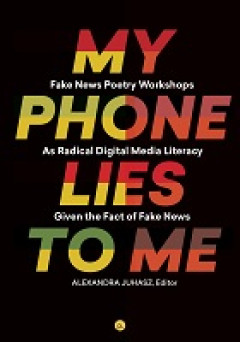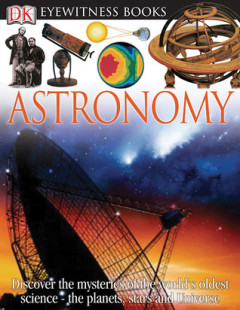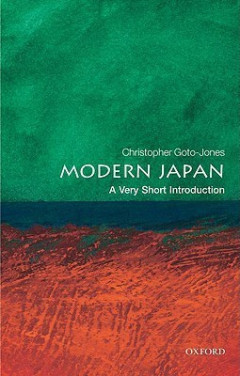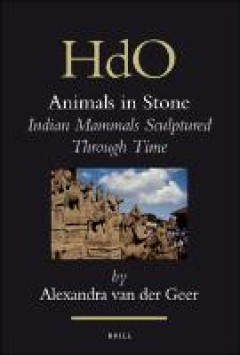Ditapis dengan
Alfonsus de Liguori 1696 - 1787 : Pujangga Gereja - Calon Penghuni Neraka
"Kasihan kau, Bapa tua, gara-gara ajaranmu, kau akan masuk neraka" Begitulah tanggapan yang hidup sezaman dengan Santo Alfonsus tentang diri dan ajarannya. Tetapi, apa yang terjadi? Alfonsus tidak masuk neraka. Sebaliknya, ia digelar Santo dan Pujangga Gereja justru karena ajaran dan teladan hidupnya. "Semua orang dipanggil untuk menjadi kudus," kata Alfonsus 250 tahun yang lalu. Ia dapat meno…
- Edisi
- -
- ISBN/ISSN
- 9792106049
- Deskripsi Fisik
- 184 hlm; 13.5 x 20.5 cm
- Judul Seri
- -
- No. Panggil
- 922.1 JON a
E-book The Museum Accessibility Spectrum : Re-imagining Access and Inclusion
Central to the practice of the modern museum sector are the principles of access, inclusion, diversity, sustainability, and community participation (ICOM, 2022). As the curators of our cultural and social histories, the heritage sector is morally and legally required to provide reasonable adjustments to ensure equitable access or all people. The dictionary definition of access is the me…
- Edisi
- -
- ISBN/ISSN
- 9781003382713
- Deskripsi Fisik
- 313 hlm
- Judul Seri
- -
- No. Panggil
- 069 EAR t

E-book My Phone Lies to Me: Fake News Poetry Workshops As Radical Digital Med…
This book of poems about fake news written by diverse project participants is foremost an invitation and invocation for readers to participate, with others, in an experiment in knowing and working differently with the internet: Fake News Poetry Workshops. Between 2018 and 2020, Alexandra Juhasz directed more than twenty of these workshops around the world, and these are ongoing beyond the confi…
- Edisi
- -
- ISBN/ISSN
- 9780399175145
- Deskripsi Fisik
- 144 halaman
- Judul Seri
- -
- No. Panggil
- 302.23 JUH m
E-book Principles of Decoration in the Roman World
A visual structure and hierarchy is created by the spatial-architectural location of the decorative elements and their relationship to one another. Traditional research drawing on Immanuel Kant’s reflections on aesthetics describes such hierarchies by referring to a particular notion of ‘image’ and ‘ornament’: the image becomes the central (research) object, the ornament…
- Edisi
- -
- ISBN/ISSN
- 9783110732139
- Deskripsi Fisik
- 205 hlm
- Judul Seri
- -
- No. Panggil
- 930.1 DAR p
E-book Disability in industrial Britain : A cultural and literary history of …
On 5 September 1908, Frank Eaves, a collier from Tonypandy in the Rhondda Fawr valley, south Wales, stood before Judge Bryn Roberts at Pontypridd County Court. Eaves had met with an accident while working underground in Blaen-clydach Colliery in 1906, when a stone of half a hundredweight had fallen on his foot. He had not worked since that time and had been in receipt of compensa-tion from the …
- Edisi
- -
- ISBN/ISSN
- 9781526124326
- Deskripsi Fisik
- 288 hlm
- Judul Seri
- -
- No. Panggil
- 941 BOH d
E-book The Development of Neolithic House Societies in Orkney
Orkney is an archipelago that lies off the rugged northeastern coast of Caithness in northern Scotland (Fig. 1.1). It is separated from the Scottish mainland by the volatile Pentland Firth, one of the roughest and unpredictable stretches of water in the world. On calm summer days the southern isles of Orkney appear colourful, tranquil and e…
- Edisi
- -
- ISBN/ISSN
- 9781909686908
- Deskripsi Fisik
- 593 hlm
- Judul Seri
- -
- No. Panggil
- 930.14 RIC t
E-book Futures and Beyond : Creativity and 4IR Conference 2022
The Futures and Beyond: Creativity and 4IR virtual conference was hosted online by UJ Arts & Culture on 30 and 31 August 2022. The University of Johannesburg has positioned the Fourth Industrial Revolution (4IR) as its visionary focus in research and higher education, and UJ Arts & Culture, as a division of the Faculty of Art, Design and …
- Edisi
- -
- ISBN/ISSN
- 9781776482733
- Deskripsi Fisik
- 142 hlm
- Judul Seri
- -
- No. Panggil
- 741.6 HAL f

E-book Rethinking the Andes–Amazonia Divide : A cross-disciplinary exploration
Maps in this book were reproduced by Paul Heggarty from maps provided by chapter authors, by converting them into a GIS (Geographic Information System) database, collated and enriched for South America for the purposes of this book. All data used on the maps are thus geo- referenced – set to actual latitude and longitude coordi-nates – as precisely as possible. Individual p…
- Edisi
- -
- ISBN/ISSN
- 9781787357358
- Deskripsi Fisik
- 421 hlm
- Judul Seri
- -
- No. Panggil
- 980 PEA r
E-book Science & Technology Studies Elsewhere : A Postcolonial Programme
In April 2017, scientists took to the streets in a historically unprecedented Global March for Science. The event was seen as symbolic of a crisis in the relationship of science and society. This book considers the Global March for Science from a postcolonial perspective to inquire into the toolkit that the academic field of Science & Technology Studies (STS) has to offer. It argues that new co…
- Edisi
- -
- ISBN/ISSN
- 9783757400392
- Deskripsi Fisik
- 326 hlm
- Judul Seri
- -
- No. Panggil
- 417.7 HOF s
E-book Understanding Basic Music Theory
People were talking long before they invented writing. People were also making music long before anyone wrote any music down. Some musicians still play "by ear" (without written music), and some music traditions rely more on improvisation and/or "by ear" learning. But written music is very useful, for many of the same reasons that written words are useful. Music is easier to study and share if …
- Edisi
- -
- ISBN/ISSN
- -
- Deskripsi Fisik
- 241 hlm
- Judul Seri
- -
- No. Panggil
- 780.72 SCH u

E-book Medicine: The Definitive Illustrated History
See the greatest medical breakthroughs come to life through superb illustrations! From ancient herbal medicine to traditional Chinese medicine, take a visual tour throughout the history of medicine with this comprehensive medical reference book.
- Edisi
- -
- ISBN/ISSN
- 9781465453419
- Deskripsi Fisik
- 322 halaman, ilus.
- Judul Seri
- -
- No. Panggil
- 610.3 DOR m
The dBase Language Reference
dBase has grown in the past few years into a powerful and popular database language. Hundred of thousands of PC users have automated their database management tasks using dBase. And as dBase has grown in popularity, various software firms have produced products compatible with the dBase language. These competing products have added unique features of their own.
- Edisi
- -
- ISBN/ISSN
- 0078816432
- Deskripsi Fisik
- xxxvi + 1033 hlm; 19 x 23 cm
- Judul Seri
- -
- No. Panggil
- 005.262 JON t
Howl's Moving Castle
Sophie has the great misfortune of being the eldest of three daughters, destined to fail miserably should she ever leave home to seek her fate. But when she unwittingly attracts the ire of the Witch of the Waste, Sophie finds herself under a horrid spell that transforms her into an old lady. Her only chance at breaking it lies in the ever-moving castle in the hills: the Wizard Howl's castle. To…
- Edisi
- -
- ISBN/ISSN
- 0060298812
- Deskripsi Fisik
- 10,5 x 17 cm, 329 halaman
- Judul Seri
- -
- No. Panggil
- 823 JON h
E-book Cambridge IGCSE Biology Coursebook
This book has been written to help you to do well in your Cambridge International Examinations IGCSE Biology examination. We hope that you enjoy using it. The book can also be used with the Cambridge O level Biology syllabus. There are quite a lot of definitions in the IGCSE syllabus that you need to learn by heart. These are all in this book, at appropriate points in each chapter, inside boxes…
- Edisi
- 3rd ed
- ISBN/ISSN
- 9781107614796
- Deskripsi Fisik
- 350 hlm
- Judul Seri
- -
- No. Panggil
- 570 JON c

E-book The Florida Room
There is every thing for you here. There is nothing for you here. As much can be said, and has been said, about a city like Miami in a state like Florida. The same might be said for this book. The logic of the case study requires evaluation and reward. (Why does this thing merit our attention? What sets it apart?) Its specialness separates it from the rest. If we can get out of that logic�…
- Edisi
- -
- ISBN/ISSN
- 9781478022541
- Deskripsi Fisik
- 249 hlm
- Judul Seri
- -
- No. Panggil
- 780.97 VAZ t

E-book Eyewitness: Astronomy
Looks at the history of astronomy, identifies important astronomers, and summarizes what is known about the Sun, Moon, planets, and stars.
- Edisi
- -
- ISBN/ISSN
- 9780756637675
- Deskripsi Fisik
- 76 halaman, ilus.
- Judul Seri
- -
- No. Panggil
- 520 LIP e

E-book Eyewitness: Eagles & Birds of Prey
Get a bird's eye view of the amazing world of raptors--from the majestic falcon, hawk and eagle to the stealthy owl and the formidable vulture. This fascinating overview examines the development, anatomy, mating, and nesting habits of birds of prey as well as their techniques for stalking, catching, and killing their quarry. Also discussed is the importance of the protection raptors in todays …
- Edisi
- -
- ISBN/ISSN
- 9780789458605
- Deskripsi Fisik
- 64 halaman, ilus.
- Judul Seri
- -
- No. Panggil
- 568 PAR e

Ebook Modern Japan: A Very Short Introduction
Japan is arguably today's most successful industrial economy, combining almost unprecedented affluence with social stability and apparent harmony. Japanese goods and cultural products--from animated movies and computer games to cars, semiconductors, and management techniques--are consumed around the world. In many ways, Japan is an icon of the modern world, and yet it remains something of an en…
- Edisi
- -
- ISBN/ISSN
- 9780199235608
- Deskripsi Fisik
- 177 halaman
- Judul Seri
- -
- No. Panggil
- 952 GOT m 002858-eB-0122

E-book Polygamy in islam
Allah alone, the All-Merciful, deserves all praise and thanks, Lord of the universe, its Creator and Sustainer. Blessings and peace be upon the last of the prophets and messengers, Muhammad, his family and Companions and all those who follow in his footsteps till the end of time. Polygamy in Islam is a favourite topic for the critics of Islam and its message. The so-called secular and We…
- Edisi
- -
- ISBN/ISSN
- 9960953300
- Deskripsi Fisik
- 108 halaman
- Judul Seri
- -
- No. Panggil
- 2X4.315 PHI p
E-book Precarious Crossings : Immigration, Neoliberalism, and the Atlantic
he Atlantic, including all the countries touched by the triangular trade and marked by a history of population displacement and cultural mixing inau-gurated through colonialism and slavery, has always been a crucial site for the development of capitalism. Without the free labor generated through slavery, the plantation economy, and the production of sugar and coffee, capita…
- Edisi
- -
- ISBN/ISSN
- 9780814214107
- Deskripsi Fisik
- 233 hlm
- Judul Seri
- -
- No. Panggil
- 902 PER p
E-book Encyclopedia Of Hinduism
ABOUT THE SERIES: 'Encyclopedia of World Religions' explores the major religions of the world, emphasising the living faiths & their background. It provides access to the theological concepts, personalities, historical events, institutions, and movements that helped shape the history of each religion and the way it is practiced.
- Edisi
- -
- ISBN/ISSN
- 9780816054589
- Deskripsi Fisik
- 593 halaman
- Judul Seri
- -
- No. Panggil
- 294.5 JON e
E-book Eyewitness Travel: Budapest
- Edisi
- -
- ISBN/ISSN
- 9780241263198
- Deskripsi Fisik
- 278 halaman, ilus.
- Judul Seri
- -
- No. Panggil
- 910 OLI e
- Edisi
- -
- ISBN/ISSN
- 9780241263198
- Deskripsi Fisik
- 278 halaman, ilus.
- Judul Seri
- -
- No. Panggil
- 910 OLI e
E-Book Researching Animal Research
Animal research is part of a complex web of relations made up of humans and animals, practices inside and outside the laboratory, formal laws and professional norms, and social imaginaries of the past and future of medicine. Researching Animal Research sets out an innovative approach for understanding and intervening in the social practices that constitute animal research. It proposes the idea …
- Edisi
- -
- ISBN/ISSN
- 9781526165770
- Deskripsi Fisik
- 480 halaman
- Judul Seri
- -
- No. Panggil
- 590 DAV r

E-Book Animals in Stone: Indian Mammals Sculptured Through Time
The art history of South Asia covers a time span of roughly four and a half thousand years. During this period, a vast number of animal stone sculptures has been produced, ranging from the pre-historic period till today and covering a great variety of motifs and imagery in different regions and religious traditions. Even so, the number of studies devoted to these animal sculptures has remained …
- Edisi
- -
- ISBN/ISSN
- 9789047443568
- Deskripsi Fisik
- 855 halaman
- Judul Seri
- -
- No. Panggil
- 722.4 GEE a
E-book Handbook Cognition and Emotion
The present volume does not generally focus on the question of whether thoughts (cognition) or feelings (emotion) are more functional. Rather, this introductory material is sufficient to make the case that, typically, thoughts and feelings are seen to be distinct entities with distinct effects (e.g., Epstein, 1994). Yet, it has become increasingly apparent that cognition and emotion often inter…
- Edisi
- -
- ISBN/ISSN
- 9781462509997
- Deskripsi Fisik
- 610 hlm
- Judul Seri
- -
- No. Panggil
- 128.37 ROB h
E-book Trickbox of Memory : Essays on Power and Disorderly Pasts
"Reach into this trickbox of memory and rummage around: you may find a tiny spaceship, or perhaps a signpost, a parade, a raised fist, an entire museum. The essays in Trickbox of Memory: Essays on Power and Disorderly Pasts draw on literary criticism, post-qualitative inquiry, new materialism, and political activism to dismember and reanimate the field of memory studies. In the trickbox, concep…
- Edisi
- -
- ISBN/ISSN
- 9781953035257
- Deskripsi Fisik
- 181 hlm
- Judul Seri
- -
- No. Panggil
- 153.12 GRU
E-book The Autofictional : Approaches, Affordances, Forms
he apparent simplicity of the etymology of “autofiction”—designating texts that have something to do with the self and with fiction—is belied by the proliferation of meanings and practices with which it is associated. Critical writing on autofiction will usually mention one or more of the fol-lowing characteristics, all of which can characterize autofictional texts, b…
- Edisi
- -
- ISBN/ISSN
- 9783030784409
- Deskripsi Fisik
- 343 hlm
- Judul Seri
- -
- No. Panggil
- 809 ALE t
E-book Scripts and Texts
The manual is split into two volumes. Vol. 1 prioritizes the reading and understanding of Roman cursive and the documents in which it is found. Vol. 2 provides an overview and catalogue of Roman writing implements, the main writing materials and accessories, and information about archaeological finds, photographs, drawings, and literary and iconographic testimony. It also presents a commentary …
- Edisi
- -
- ISBN/ISSN
- 9780853583462
- Deskripsi Fisik
- 50 hlm
- Judul Seri
- -
- No. Panggil
- 091 MUL s
E-book Wood Modification in Europe : A state-of-the-art about processes, prod…
Wood modification represents an assortment of innovative processes currently being adopted in the wood protection sector. Though many aspects of these treatments are known, the fundamental influence of the process on product performance, the environment, and end of life scenarios remain relatively unknown. It is essential to integrate interactive assessment of process parameters, developed prod…
- Edisi
- -
- ISBN/ISSN
- 9788864539706
- Deskripsi Fisik
- 124 hlm
- Judul Seri
- -
- No. Panggil
- 674.8 SCH w
E-book New Digital Work : Digital Sovereignty at the Workplace
Furthermore, within the context of action regulation theory, a suitable concept canbe identified to conceptualize sovereignty with respect to individuals in work settings.A core meaning of sovereignty – across all domains as described above (Couture and Toupin 2019) – deals withcontrol, in the sense of individuals – or groups, movements,corporations, states – having control over their e…
- Edisi
- -
- ISBN/ISSN
- 9783031264900
- Deskripsi Fisik
- 307 hlm
- Judul Seri
- -
- No. Panggil
- 621.39 BAC n
E-book Dictionary of World Biography
In the mid-1950s I had been puzzled that no comprehensive biographical dictionary was available in paperback and I determined to fill the gap. I wrote to Penguin Books in London/ Harmondsworth and received a thoughtful and encouraging letter from A. S. B. Glover, a classical scholar and editor. The two generally available major biographical dictionaries, Chambers’s and Webster’s, both had s…
- Edisi
- 6th. ed
- ISBN/ISSN
- 9781760462871
- Deskripsi Fisik
- 976 hlm
- Judul Seri
- -
- No. Panggil
- 920.003 JON d
E-book Egypt and the Classical World : Cross-Cultural Encounters in Antiquity
In 2018 the J. Paul Getty Museum presented the exhibition Beyond the Nile: Egypt and the Classical World, curated by Jeffrey Spier, Timothy Potts, and Sara E. Cole. This was the first in a series of exhibitions and publications seeking to explore how Greece and Rome influenced and were influenced by neighboring cultures and civilizations in the Mediterranean and Near East over a period spanning…
- Edisi
- -
- ISBN/ISSN
- 2022010011
- Deskripsi Fisik
- 187 hlm
- Judul Seri
- -
- No. Panggil
- 700.62 KEL e
E-book My Phone Lies to Me : Fake News Poetry Workshops As Radical Digital Me…
I believe in processes and people. In this effort, poems are made from them. These poems, and associated writings collected here, were written to “teach and tell, count and swell” about some truths about contemporary internet culture (this is also the title of the #100th #hardtruths of my 2017 born-digital primer on digital media literacy, …
- Edisi
- -
- ISBN/ISSN
- 978-1-68571-069-9
- Deskripsi Fisik
- 145 hlm
- Judul Seri
- -
- No. Panggil
- 028.9 JUH m

RATU PREMAN
- Edisi
- cet. 1
- ISBN/ISSN
- 978-979-22-4837
- Deskripsi Fisik
- 216 hlm.;13,5 x 20 cm
- Judul Seri
- -
- No. Panggil
- 8X0 ANG r
- Edisi
- cet. 1
- ISBN/ISSN
- 978-979-22-4837
- Deskripsi Fisik
- 216 hlm.;13,5 x 20 cm
- Judul Seri
- -
- No. Panggil
- 8X0 ANG r

DUA PASANG MATA
- Edisi
- cet. 1
- ISBN/ISSN
- 979-22-1517-4
- Deskripsi Fisik
- 280 hlm.;13,5 x 20 cm
- Judul Seri
- -
- No. Panggil
- 8X0 YUN d
- Edisi
- cet. 1
- ISBN/ISSN
- 979-22-1517-4
- Deskripsi Fisik
- 280 hlm.;13,5 x 20 cm
- Judul Seri
- -
- No. Panggil
- 8X0 YUN d
 Karya Umum
Karya Umum  Filsafat
Filsafat  Agama
Agama  Ilmu-ilmu Sosial
Ilmu-ilmu Sosial  Bahasa
Bahasa  Ilmu-ilmu Murni
Ilmu-ilmu Murni  Ilmu-ilmu Terapan
Ilmu-ilmu Terapan  Kesenian, Hiburan, dan Olahraga
Kesenian, Hiburan, dan Olahraga  Kesusastraan
Kesusastraan  Geografi dan Sejarah
Geografi dan Sejarah